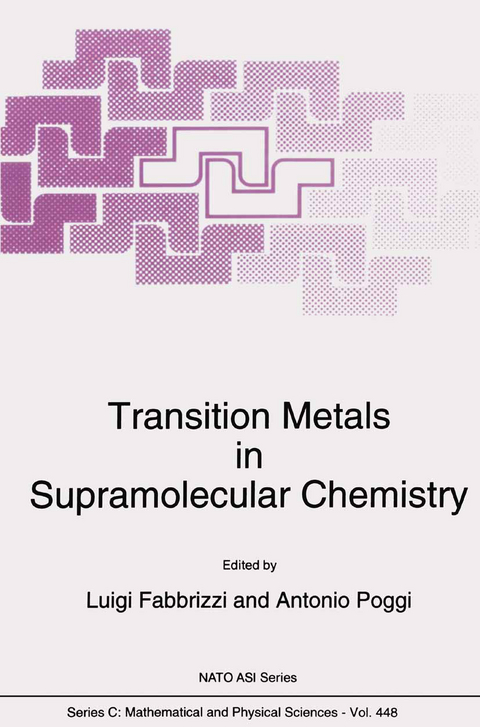
Transition Metals in Supramolecular Chemistry
Springer (Verlag)
978-90-481-4483-9 (ISBN)
Transition Metals in Supramolecular Chemistry focuses on the following main topics: (1) metal controlled organization of novel molecular assemblies and shapes; (2) design of molecular switches and devices operating through metal centres; (3) supramolecular catalysts that mimic metalloenzymes; (4) metal-containing sensory reagents and supramolecular recognition; and (5) molecular materials that display powerful electronic, optoelectronic and magnetic properties.
Supramolecular photochemistry and photophysics. Energy conversion and information-processing devices based on transition metal complexes.- Transition metal redox active ligand systems for recognising cationic and anionic guest species.- Ligand design for enhanced molecular organization — selectivity and specific sequencing in multiple receptor ligands, and orderly molecular entanglements.- Metal-ions: a self-assembly motif in supramolecular oligomers.- Biomedical targeting: a role for supramolecular chemistry.- Redox chemistry of metal ion complexes: preparation of new materials.- pH and redox switches based on metal centres.- Schiff base macrocycles and metallo-biosite modelling.- Self-assembly of mono- and dinuclear metal complexes; oxidation catalysis and metalloenzyme models.- Artificial porphyrins containing cyclopropane units functioning as electron shuttles.- Homo- and heterobinuclear metal complexes with bismacrocyclic ligands.- Ferrocene as a building block for supramolecular chemistry systems.- Macrocyclic polyamine complexes beyond metalloenzyme models.- Towards molecular wires and switches: exploiting coordination chemistry for non-linear optics and molecular electronics.- Molecular interactions between metalloproteins involved in electron transfer processes: tetraheme cytochrome c3 and flavodoxin. NMR and molecular modeling studies.- Supramolecular models of metallo-proteins.- The role of macrocyclic receptors in organization of metal centres.- Metallomacrocycles and -clefts: receptors for neutral molecules and anions.- Chiral recognition by functionalized cyclodextrin metal complexes.- Transition metal-directed threading and knotting processes.- Expanded porphyrins. Receptors for cationic, anionic and neutral substrates.- Following the self-assemblyprocess in solution.- Author Index.
| Erscheint lt. Verlag | 6.12.2010 |
|---|---|
| Reihe/Serie | NATO Science Series C ; 448 |
| Zusatzinfo | XXII, 436 p. |
| Verlagsort | Dordrecht |
| Sprache | englisch |
| Maße | 155 x 235 mm |
| Themenwelt | Naturwissenschaften ► Chemie ► Anorganische Chemie |
| Naturwissenschaften ► Chemie ► Organische Chemie | |
| Naturwissenschaften ► Chemie ► Physikalische Chemie | |
| ISBN-10 | 90-481-4483-3 / 9048144833 |
| ISBN-13 | 978-90-481-4483-9 / 9789048144839 |
| Zustand | Neuware |
| Haben Sie eine Frage zum Produkt? |
aus dem Bereich


